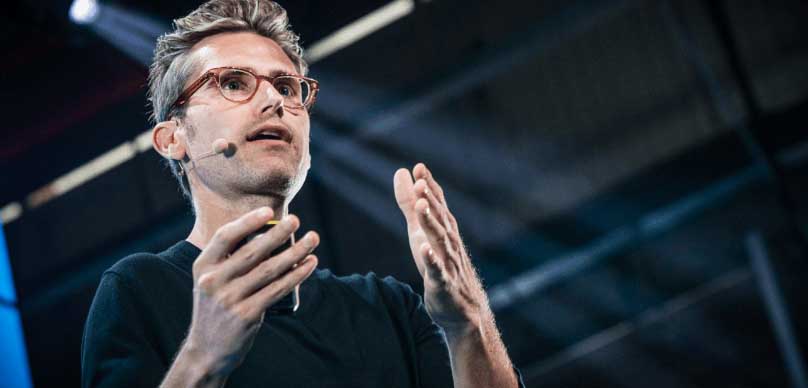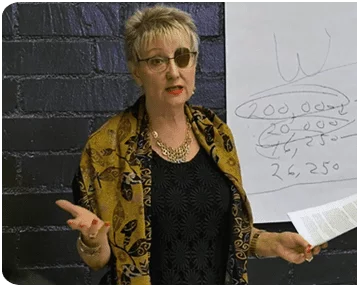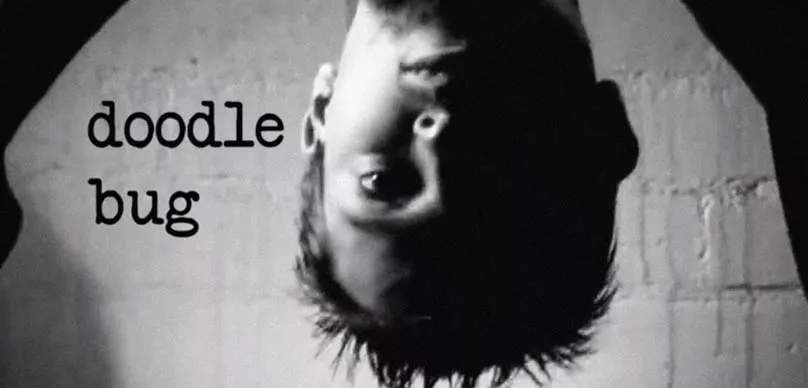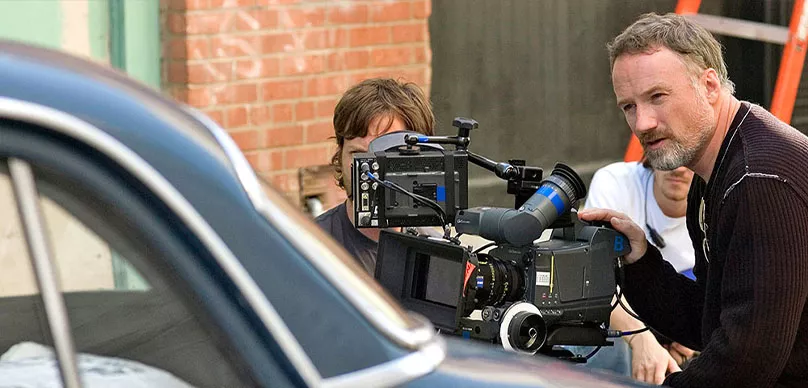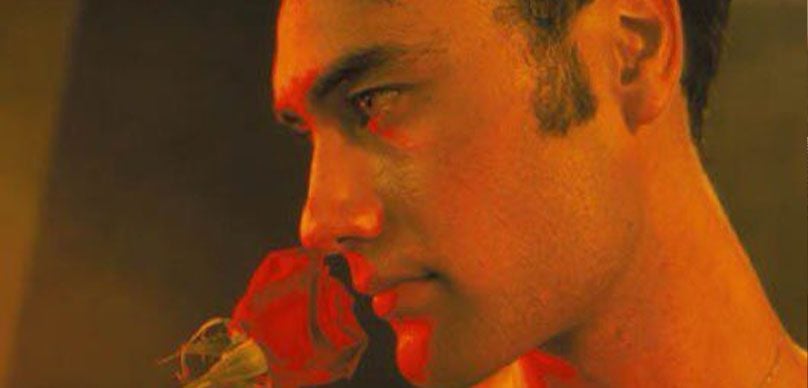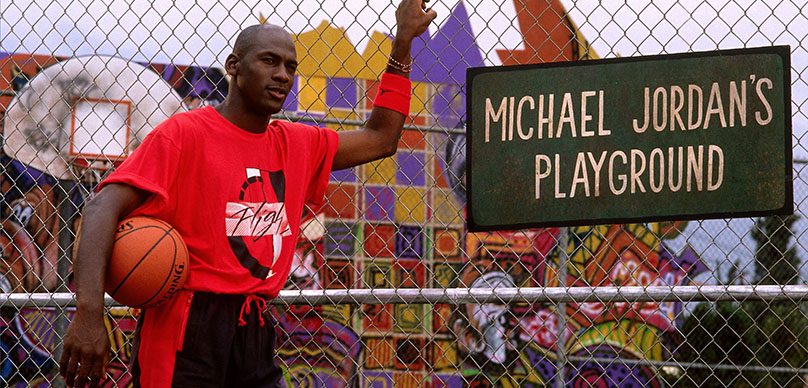Right-click here to download the MP3
Ever wanted to know how to build a large following on social media? Today’s guest Brendan Kane was able to get over 1 million followers in 30 days. His new book, [easyazon_link identifier=”B07B26Q19V” locale=”US” tag=”whatisbroke-20″]One Million Followers: How I Built a Massive Social Following in 30 Days[/easyazon_link]breaks down how he was able to achieve such a feat. Brendan Kane is a growth hacker for Fortune 500 corporations, brands and celebrities. He thrives on helping brands systematically find and engage new audiences who reward relevant content, products and services with their attention and spend.
Over 60 billion online messages are sent on digital platforms every day, and only a select few succeed in the mad scramble for customer attention.
This means that the question for anyone who wants to gain mass exposure for their transformative content, business, or brand or connect with audiences around the globe is no longer if they should use social media but how to best take advantage of the numerous different platforms.
How can you make a significant impact in the digital world and stand out among all the noise?
Digital strategist and “growth hacker” Brendan Kane has the answer and will show you how—in 30 days or less. A wizard of the social media sphere, Kane has built online platforms for A-listers including Taylor Swift and Rihanna. He’s advised brands such as MTV, Skechers, Vice and IKEA on how to establish and grow their digital audience and engagement. Kane has spent his career discovering the best tools to turn any no-name into a top influencer simply by speaking into a camera or publishing a popular blog—and now he’ll share his secrets with you.
In One Million Followers, Kane will teach you how to gain an authentic, dedicated, and diverse online following from scratch; create personal, unique, and valuable content that will engage your core audience; and build a multi-media brand through platforms like Facebook, Instagram, YouTube, Snapchat, and LinkedIn.
Enjoy my conversation with Brendan Kane.
Alex Ferrari 1:16
Now guys, today on the show, we have author and growth hacker Brendan Kane, whose new book 1 million followers How do I build a massive social media following in 30 days is taking the world by storm, especially the social media world and marketing world. He was able to generate 1 million followers on Facebook and Instagram within 30 days. So we go deep into how the heck he did this, his strategies, and how you can use these strategies to help sell your movie and how to build a following for your film. So without any further ado, please enjoy my conversation with Brendan Kane. I'd like to welcome to the show Brendan Kane, thank you so much for being on the show, my friend.
Brendan Kane 3:11
Thanks for having me. I appreciate it.
Alex Ferrari 3:12
I am a big fan of your book, The 1 million followers. It's It's awesome. And I'm so glad someone wrote it. Now, first off, how did you gain 1 million followers in 30 days.
Brendan Kane 3:29
So first off, it wasn't like I just woke up one day and I'm like I'm I'm like without any experience or testing and design, we're just gonna do this I, I inspect. First off, I've been in the digital space for about 15 years. And I have in terms of how I generate a million followers specifically, I spent about three years building a set of my own, like testing methodologies on top of Facebook and Instagram that would allow me to test content at scale. And really learn what content formats themes and stories work so that you can generate growth in any area, whether that's lead generation traffic, and in this case, followers. And the basic system that I used was to to test as many variations of content in real time to really understand what it would take to get somebody to perform a specific action, in this case following an account. So I had tested over 5000 variations of content in that 30 day time period. Now that sounds like a huge daunting task. And they're like this guy's insane. He probably didn't sleep. he hopped on caffeine. But it really I spent maybe an hour and a half a day on it. It's not as daunting of a task as it seems when you understand kind of the system and the methodology. And the way that I did it for Facebook is different than I did it for Instagram. So with Facebook specifically, I'll just start with that because that was the 30 day time period. So what I did is I leverage the Facebook app advertising platform, which extends to Instagram and WhatsApp and messenger as not an advertising tool or media buying tool which people normally use it for, which is it's remarkable at that. But I use it as a market research tool to be able to see content of different people from different backgrounds in different parts of the world, and see the response rate of what would happen, and that would fuel my content strategy, both in the short and the long term. So when I talk about 5000, variations, it wasn't 5000 pieces of content, like there's two to a variation, there's five elements. So you have the creative itself, the headline, the demographics, the interest level, what like what they're interested in products or services, and then the geolocation. So if you take one piece of content and swap out a headline, that's one variation. Or you can swap out the demographics and interest a geolocation, all of them are interchangeable. So that's where you can take one piece of content and essentially test it 100 to 200 different ways. And what it does is it gives you more chances to win and more chances to learn. So every night at midnight, I would schedule tasks between 30 to 300 variations of content, when I would wake up in the morning, I would measure the results, see what have worked or what had not worked. And the things that were working, I would feel more of that the things that weren't working, I would figure out what behind it wasn't working, and take those learnings to apply it to the next test and the next test. So that's how I did it for Facebook over that 30 day period. And then Instagram, I had to develop a different system for that. Because the advertising platform doesn't really allow that much for follower growth, the way that we found for for rapid follower growth as you distribute content and other channels and drive traffic back versus Facebook, you can push content out and just generate exponential growth that way. So with Instagram, we still use this kind of rapid iteration process. But the way that we do is we have a partner account with 3 million followers. And we see content out to that channel test and measure the effectiveness of that piece of content to convert back to followers to an account. And then once we found a winning variation, then we have a we have about 18 different accounts that have large followings that we can syndicate that content out to to to scale and drive that traffic back.
Alex Ferrari 7:20
Okay, so it's kind of like creating a network of you within yourself that you are able to syndicate throughout your own your own war, your own ecosystem, if you will.
Brendan Kane 7:29
Absolutely. And but at the end of the day it comes down to content is, for example, we have a partner that has 17 million followers on Instagram. And if you post a piece of content that hasn't been tested, it's not really optimized. Even though you're posting an account with 17 million followers, it can only generate like two or 300 followers. versus if you have an optimized piece of content that has been designed with this in mind that has been tested and validated. It could generate anywhere from like five to 10 to 15,000 followers off that single post. So it's really, people get caught up in this idea of Oh, if I just get in front of a bunch of people, I'm going to be successful. That's not the case. Like, like, you know, in the film industry is these films spend 10s of millions of dollars getting a trailer out there that doesn't guarantee that people are going to go see the movie because of the trailers not good. It doesn't matter. The same principles apply here in generating followers or any of that having success in any aspect of digital is like you have to optimize that content to to a point that's going to motivate and inspire people to click that follow button.
Alex Ferrari 8:35
Now what advice would you have for filmmakers or independent filmmakers trying to generate some sort of attention? Or for them to actually have them click or rent or watch something on Facebook or Instagram? Like what what advice would you have for for filmmakers just starting out?
Brendan Kane 8:51
There's a few things that I would look at. I mean, first off, this is common knowledge because every major movie studio does this. But the first three to five seconds of the video is critically important especially when you're talking about Facebook or Instagram where 70% of the video is watched with the sound up as you're swiping up the feeds. And that's why the studio's think it has been like five or six years now put a three to five second trailer before the trailer plays. So really understanding that important the critical importance of that first three to five seconds of your video to get people in to watch for a longer period of time. I think secondarily is really knowing your audience is who is that core audience that you're going after? What is it that is going to capture their attention what what some historical data really look at trailers of movies that have worked in the past and also look at trailers of movies that haven't worked in the past it really decide or really determine what you can take away because I think some filmmakers they just look at it from from the actual movie of what worked and more importantly is actually look at the trailer of what worked because the truck the trailer is really What's driving success? I will film now, yes, there are films that are just so good that start on a limited release. And that word of mouth will carry them. But those films are so far and few between majority of the time it's the trailer that's selling the movie. So really understand and studied the trailers of films that have worked or have not worked? And what are the key elements that they used in those trailers to attract that attention? secondarily, it's testing like test different trailers. I mean, the studios do this all the time. But you should do this yourself is test different three second intros, test different clips, different ways of telling that story. I think it's hard. And I recognize it's hard for independent filmmakers, to create variations of trailers, but you're really limiting yourself if you're only putting one trailer or one teaser out in the world and expecting that just to perform. So I think that that's a good place to really start from a content perspective.
Alex Ferrari 10:59
And when you're saying testing, please explain to the audience that testing is something that could be done extremely affordably, I mean, for a few bucks, you know, 510 1520 bucks, you can do a real quick test to see if something's gonna play or not correct?
Brendan Kane 11:12
Absolutely. I mean, first off with the Facebook and Instagram advertising platform, which I think is one of the best testing tools at our fingertips, there's no minimum, like you can spend $5 $10 $20 and learn something from it. Or if you don't want to take it that far, you can test it organically as get the trailer placed on a blog or a website, or even on your own social channel and measure the response between that it's not as effective but at least you're learning something. But yes to test like, you don't have to spend 10s of 1000s of dollars to do it. You can spend 1020 3040 $50 and learn something from it.
Alex Ferrari 11:49
Now targeting How can you give any advice in regards to targeting for especially, especially for filmmakers? Because I find that they sometimes will, like let's say they do a romantic comedy, and then they try to target people who like romantic comedies, it's just not going to work. They don't have the finances to do you know, to hit that giant demographic? would you suggest niching? down as much as possible? What advice would you have for targeting demographically and also locations?
Brendan Kane 12:14
So typically, the way that I approach testing is, you test as many interest levels and demographics against each other. So within so within the Facebook advertising platform, there's there's three core aspects to it, or three levels. So you have the campaign, which is where it kind of you set the objective is like, am I trying to generate video views? Am I trying to generate conversions? Am I trying to generate traffic, whatever that is? Then the second is the ad set. And the ad set level is where you actually control the targeting. That's where you can control the audience. The demographics, are they male? Are they female, female? Are they age? What other movies do they like? Do they like romantic comedies, they like adventure movies, do they like Tony Stark Do they like the Hulk whatever it is like you can put it in there. And most of the time, they'll have it. And and also within that you can do geolocation, you could do it all the way down to the specific zip code. Now for filmmakers, I typically don't recommend that because your costs are extremely high in the in the auction. And then the third is the ad level is like the actual creative itself. So the ad set level is where you get really creative with all of this. And what I typically do is I create different ad sets that break out the interest level. So for example, you'll create an ad set with just romantic comedy fans, and you'll they'll create another one with adventure fans, another one with Tony Stark fans whatsoever you can, it's really important to segment those out into separate tests, because what most people will do is they'll put all those interests into one ad set. And then you don't learn anything because Facebook doesn't provide you data on who viewed it from which interest level, it does provide it from a gender and a age group. So what we'll typically do is we'll start just broad and say 18 to 65, plus both male and female, and then we'll see where Facebook pushes it because you can break down whether it was pushed to more males or females, or whether it was pushed to a specific age group. And I like to do that because for two reasons. A it brings down your costs and the auction so you can reach more people for cheaper costs. And then also I like it because what it does is it allows Facebook's auction and algorithms to push it to who they think is going to resonate with because that's its job, because they want to push content to the people they think are going to respond to it. And it gives you some data on who's actually responding to it who is getting seated to and then from that then you can create subsequent ad sets or tests based on that data that's coming in.
Alex Ferrari 14:49
Now, Facebook has basically become a pay or play kind of platform where before if you had a million followers you put a post up on your on your page and it would reach a significant amount or even even a small amount now, you know, I have 120, some 1000 followers and I post something and 300 people will see it 400 peoples unless it goes viral unless I push it or unless I do other things to get attention to it. Do you have any advice on getting attention or using the platform without having to boost or without having to pay?
Brendan Kane 15:23
Absolutely. So let's just talk about the algorithms because the algorithms control how many people see your content. And I feel like the algorithms get a bad rap. People are get upset and frustrated with them. And I understand I get frustrated by it as well. But if you really look at the fundamental principles of why they're there, it'll give you a better understanding of a how to take advantage of it, and how to problem solve if you're not getting the reach that you need. So the algorithms are designed so that every time you open up the app, whether it's Facebook, or Instagram, or Twitter or whatever app you're using, YouTube, it's designed that every time you open that up that app up, you're going to be served with content that they feel is going to be the most engaging for you. Because they know if you open up Facebook or Instagram, and that piece of content that you're first seated with are the first three pieces of content is not engaging, you're going to get bored, and you're going to leave. And if that keeps happening over and over again, you're going to resort to using that app less and less until eventually you won't use it any further. So the algorithms are always designed with. And this is individually for each person like what is the content that's going to resonate with this person the most, to get them to stay on the app longer. And today, we're following hundreds in some cases, 1000s of pages more so on Facebook than Instagram, I think you're following the hunt your 1000s of pages over the years of engaging with the platform, Instagram, maybe it's a few 100. And you've got to take into consideration when they're when you're opening that app, it's got to decide where to give me the top three or five posts that it's going to push to you out of hundreds or possibly 1000s of posts. So if you're pushing out content, so let's just say you have 100,000 followers, and you push out a piece of content, what Facebook is going to ultimately do is it's going to seed it to 500 of those 100,000 followers and measure the response rate. And if that response rate is not good, that contents not going any further. If that response rate is good, it will seed it to another 1000, measure the response rate and see if it holds and if it holds, it will extend it to more people and more people. And that's where that organic reach comes from. That's where that virality comes from. But if you keep putting out content that when it sees it to those initial people, it doesn't generate the response that it's looking for. And you do that over and over again, your page is automatically going to be labeled in the in the algorithms as something that doesn't push out, engaging content, versus on the flip side of your account gets known for pushing out content that's highly engaging, it has far more flexibility in the algorithms and the amount of reach that it gives you. So that's why you'll see content creators like Prince EA, who wrote the foreword of my book or like a Jay Shetty, who are generating 10s of millions, in some cases, hundreds of millions of views on their content, a their content is good. But B also they built up so much trust in the algorithms that they're getting so much reach out of their content. So that's first and foremost, just understanding that concept. And then if you're not getting the reach, then it's starting to determine Okay, what am I doing wrong with my content, what aspects of my content is not engaging when it first seeds it to that first three 300 to 500 people. And this is what we do a lot with my content and the content that we work with people on as well measures, things. For example, with video, what we'll measure is the the most important metric is the number of views to the reach that we get. And what is that ratio look like in a view is counted at three seconds. And that metric is so important to to Facebook, because it determines whether or not people are actually engaging because if people are swiping up and they don't watch the first three seconds, they're going to stop seeing that content to people. But if you can generate that a high ratio, and typically we look at anywhere between 30 to 40%. Anything above 40% is amazing. But 30 to 40% is our sweet spot that we're aiming for. If we can get in that 30 to 40% range, we just see the reach exponentially grow. Because Facebook's algorithm see that the content is resonating with people people are actually taking the time. Now unfortunately, Instagram doesn't give us that metric. But we can generally tell by the reach by the number of views that we're generating off piece of content. But that's kind of how we look at it and we just really design our content to feed into the algorithms. First of all foremost, because without that, you're just not going to get the reach that you need.
Alex Ferrari 20:04
So it's not throwing everything up against the wall on a Facebook page, you really, really got to be a little bit more strategic with what you're saying.
Brendan Kane 20:10
Yeah, I mean, there's definitely testing that goes into ball that's involved in I mean, one of the first places we already kind of talked about it, the first place that I start is competitive analysis, is who's doing well on these platforms? What are they doing right? What are they doing wrong? So we'll always do a competitive analysis of counts, we'll make a list of like five or 10 accounts that will track and we'll just see what they're doing differently than everybody else that's leading them to have success. And then we reverse engineer that. And then we see how do we apply that to our content.
Alex Ferrari 20:41
So that's what that because Jay Shetty is such a unique example, or tastes, a test case study, because he's basically he owns Facebook watch. I mean, he's got billions and billions of views. And he basically did in a very short amount of time. I mean, he within a couple, two, three years of putting these videos out. So he's not paying for that kind of exposure. This is just now he's gotten to a point where it's organic 100, almost 100%.
Brendan Kane 21:10
Yeah, I mean, for him, it's been organic since the very beginning print CA's, another great example goal cast. And they like what BuzzFeed did with tasty and some other platforms? Yes, there's been a bit of a dip in the algorithms being changed. But there is so much potential from an organic perspective. And that goes for Instagram and YouTube as well. It's just people. Where I see people go wrong is they're typically designing content for themselves, not for the algorithms and not for other people. They're just designing for themselves. And they get so caught up in what they want to say and what they want to show people. And first off, they don't think about the the audience. But more importantly, they don't even think about the algorithms all they just throw their hands up and be like, the algorithms are unfair, oh, Facebook just wants me to get people to pay for reach. That's not the case. Like, yes, Facebook and Instagram make their money off of advertising. But that's not the reason that they're limiting reach their limiting reach, because there's only so much content that they can push into your feed. And they have to be very selective with it.
Alex Ferrari 22:14
Now, we've talked a lot about Facebook and Instagram is Twitter and YouTube. How would you approach those two? Because they're such different beasts than Facebook?
Brendan Kane 22:23
Absolutely. So Twitter, I don't really touch that much. YouTube, I think is is still a tremendous opportunity and, and YouTube, there's a few different variables that come into play, thumbnail and headline are a huge critical part of success. Because a lot of video views are coming from like suggested videos that you'll see on like the right hand side. And what they'll typically do is they'll measure the first and foremost the click through percentage of if like, let's just say there's five videos on the right hand side, as you're watching a video. What is that click through percentage of somebody clicking on that video? And then they'll also match it with the watch time, like, how long are they watching that video. And if those two metrics play together, well, well, then it'll just give you more and more reach, because that's just showing you that are showing the algorithms that this content is retaining users. It's interesting to people and it's keeping people on the platform longer. So we typically focus heavily on thumbnails and headlines as that first component, but then also the content has to hold attention. Because all of these platforms, they make more money, the longer you're on the platform. And YouTube is a long form consumption behavior platform. So it's always looking for those videos that are going to retain people for the longest period of time. And that's where you see Facebook and Instagram, like Facebook, creating Facebook watch, and Instagram, generally are creating igtv, they're trying to change their consumption behavior, because their consumption behavior today is very short form content. But they're trying to compete against YouTube, which is a very daunting and difficult task, which I think they're gonna have trouble making that shift in consumer behavior on their platforms. But the whole idea of all these platforms is they want to see the best content to that. So the top that are going to retain the users for the longest period of time.
Alex Ferrari 24:16
And then so with Facebook, watch, you know, they're trying to go after YouTube. And but but I agree with you, 100% of people are so used to Facebook being what Facebook is, and now they're trying to change things. And the other thing that annoys the heck out of me is that they throw the commercials in the middle of the video, as opposed to YouTube that puts it generally at the beginning or the end. So, you know, what do you how do you feel that's going to play in, you know, moving forward? Do you think it's going to be successful? In your opinion,
Brendan Kane 24:44
I don't think that the current iterations are going to be successful. But the one thing that I admire about Facebook and Instagram is they are not afraid to fail. And they are not afraid to test things. So I mean, you just look at what they did in Taking out snapshot with with Bernice, she's, they've tested several iterations before that are things that just didn't work. But they figured it out and it was a game changer for them. I firmly believe they are smart enough that they will figure something out. I don't know that it's going to be the current iteration of Facebook watch and igtv. But I don't I don't doubt them for a second because they have the smartest people on the planet working for those companies. And I think that they will figure out a solution for long form consumption. My bet would probably be that it would be a separate standalone app instead of within Facebook or Instagram. But we'll see what they what they come through with.
Alex Ferrari 25:40
And what social media platform, do you see the most growth potential in moving forward?
Brendan Kane 25:47
It's a great question. I still firmly believe in the Big Three, it's it's Facebook, YouTube, and Instagram, I think there's tremendous amount of potential for LinkedIn, not so much for filming. I mean, there's some strategic things for filmmakers. But last, so I think Facebook, there's still a huge opportunity there. When you look at the global scale of it. I mean, there's 2.2 billion people on the platform, people just focus on the US numbers. But especially on the film side, where we know 60 to 70% of box offices is generated nationally, there's a tremendous amount of growth potential with that platform, if you're trying to drive traffic out to a third party destination, it's very good for that. It also the viral coefficient of pushing content through that platform is much higher than any others. That's where you can generate videos, that that or create videos that generate 100 million views. You can't really do that on Instagram, I don't even know if there has been a video that has generated 100 million views on this. Maybe there is but it would probably be less than five, YouTube, you can get some videos mainly on the music side to generate hundreds of millions of views. But it's not as easy for the average creator to do it like a Jay Shetty going to YouTube is not going to generate that exponential growth that he did on Facebook. So that's a huge growth potential Instagram, I see as a platform that is probably the most attractive from a brand perspective. Most people value Instagram over the other two platforms at this point. It's a little bit slower growth. But the engagement rate to generate typically is higher with stories in native posts. But that's going to change as more people get on the platform. And as we talked about what happens with the algorithms, if there's more content in the platform, it needs to determine which content to see to the top. And YouTube I think is filled. There's tremendous value growth potential in that platform, just by the sheer size. And just the fact that it is one of the only platforms on digital, that is long form consumption behavior where you can get somebody to literally watch a video for 30 minutes or an hour. And I think that there's there's a lot of competition there. But I think if you really study and you get good at it, there's tremendous value, because you're fostering a deeper relationship with your audience and your fan base than you can with an Instagram or Facebook. Now, would you recommend boosting a post on Facebook, or actually taking an ad out for that thing, I always do things through ads manager because you can have more control, you can segment tasks and all those things that we talked about earlier, I will say that we're very strict about what we'll put money behind. Because if you're putting money behind a piece of content that's not going to perform or is not performing while you're basically teaching the algorithms that your contents not good. Versus the reverse side is if your content is really good, and it just needs that extra push, you're teaching the algorithms that the content that your page is putting out is good. So you've just got to make sure that if you are going to spend money even if you're spending $10, that the content is worth spending $10 behind because are putting behind because that is going to reflect on how the algorithm see the content in your page.
Alex Ferrari 28:59
And last question, what is the biggest mistake you see people make when they're trying to grow their social media accounts, or build an audience in general,
Brendan Kane 29:08
Everything comes down to content. And the mistake I mentioned, one of the mistakes I think is a huge mistake is people are designing content for themselves. They're not designing for the algorithms or not designing it for their audience. So that's one thing. And then I think also, as people don't really look at any analytics or data, they just keep pushing the same content out and they're not testing, they're not iterating. And they just keep pushing content out. And then they expect different results. They expect the algorithms to start picking it up or for them to go viral. But if you don't take that time to test and iterate and also do a competitive analysis and study other people's content, you're never going to get better. And so we spent so much time looking at other people's content of how they're doing, what they're doing, where their successes, to really understand how we can get better as content creators not saying steal people's content, but steal their formats. peelers stealer structures, like if you see like on a lot of videos, they have a meme card built, burned into the top and captions at the bottom. Everybody is that now and they use it because 70% of that that video on Facebook and Instagram is typically watch with the sound off as as they're swiping up, and somebody came up with that concept. I don't even know how long you're five or six years ago, and everybody's doing it now. And now you have to iterate off of that to get it to perform. But those are the type of things that pay attention to is what are the formats? What are the structures that are working for people and pay attention to as much detail as possible pay attention to those first three seconds, pay attention to collars, tones, all of those different things.
Alex Ferrari 30:41
Brendan man, thank you so much for coming by. I know you're a very very busy man. You're you're creating social media empires everywhere. So I do appreciate you coming by and talking to the tribe today. So thanks, man.
Brendan Kane 30:53
Great. Thanks for having me. I appreciate it.
Alex Ferrari 30:55
I want to thank Brendan, so much for coming on the show and dropping those knowledge bombs on the tribe today. If you want to link to Brendan's book, how to get ahold of him or any of his other amazing products, please head over to the show notes at indiefilmhustle.com/353 for the show notes, and if you haven't already, please head over to filmmakingpodcast.com. Subscribe, and leave a good review for the show. It really helps us out a lot. And please share this episode, or the podcast or the website with five of your filmmaking friends. I want this information to get out to as many filmmakers as possible we want to build this tribe and make it bigger and bigger. Every single day. I want to help as many filmmakers as humanly possible. So thank you for helping me with this guys. And thank you for all your support. As always keep that also going. Keep that dream alive. And I'll talk to you soon.
Sign up to receive email updates
Enter your name and email address below and I'll send you periodic updates about the podcast.
LINKS
- Brendan Kane – Official Site
- Brendan Kane – Instagram
- Brendan Kane – Facebook
- Make Your Movie Bootcamp – Oct 26 & 27 // 20% OFF
- Email Bootcamp Questions Here
- Rise of the Filmtrepreneur®: How to Turn Your Film into a Moneymaking Business
SPONSORS
- Bulletproof Script Coverage – Get Your Screenplay Read by Hollywood Professionals
- Audible – Get a Free Filmmaking or Screenwriting Audiobook
- Rev.com – $1.25 Closed Captions for Indie Filmmakers – Rev ($10 Off Your First Order)

